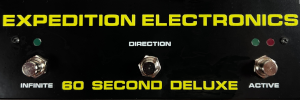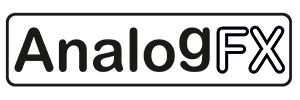Showing posts sorted by date for query Cinematic Laboratory. Sort by relevance Show all posts
Showing posts sorted by date for query Cinematic Laboratory. Sort by relevance Show all posts
Saturday, December 13, 2025
Granulita Versio | Granular Spectral Chord Resynthesizer with Shimmer Verb
video upload by Cinematic Laboratory
"Noise Engineering has done it again. This new Versio firmware can turn a mono voice into big chords, arps and clusters, but it also works great with samples and atonal noise. The firmware is free to install, but you'll need at least one (any) Versio module. It can make your old, dull and obsolete modules sound brand new, so make sure to give it a try. Highly recommended!"
Monday, November 24, 2025
The Secret Life of Plants | From Instruo Scion to PocketScion
video upload by Cinematic Laboratory
"This video is about making music with biofeedback from living organisms like plants, animals and humans. I made a video about Instruo Scion five years ago, and I couldn't resist getting the small PocketScion.
I don't know how to explain this, it's a brilliant design with huge potential, but it doesn't come out on its own. Sonically it's a bit tame with the inevitable additive 'organ-ish' sounds, the pluck, a subtractive voice and a very cool noise preset - which sounds amazing, but doesn't really match the mood of plant music. Most presets use a 5 or 6 note scale to avoid dissonants, so it sounds a bit like musical wallpaper.
Its main goal is to take it outside and capture the secret life of plants translated to ambient music, but it can't possibly survive a rainy day in the forest without a cover (or in the pocket).
So is it any good?
YES!
The Controller app allows you to change scales, ranges, midi channels and a control channel (default CC1 - ModWheel) you can route to other destinations (e.g. expression). Since you have five channels, you can make breathtaking generative music in the DAW, controlling five different CC's. It's brilliance is revealed when you hook it up to your DAW and drive 5 midi channels with an ambient VST for each channel (or VCV Rack?). It's truly amazing as a generative midi controller. On it's own, I'd say it's a 6 of 10. With MIDI, it's an 11 (strictly personal opinion)."
Thursday, November 20, 2025
A Recipe For Chaotic Beauty | Modular Classroom | Episode 04
video upload by Cinematic Laboratory
"This series is a bit more advanced than usual, but this does not mean 'difficult', it means 'low level'. I will revisit Rob Hordijk's Benjolin and Blippoo Box again, not to recreate them, but to understand its components a bit more so they can be used elsewhere. We'll build a Twin Peak filter with Blades and Blinds (or any duo filter with a polarizer), a Comparator with Maths - which can make amazing new sounds using any two VCO's, I'll revisit the Rungler with Marbles and finally I've been looking for ways to detect equality between two voltages so we can generate a trigger or gate. I am not aware of any comparator that has an '=' output, but I figured out a way to approximate it with Maths.
I've been using ChatGPT as a research tool and it came up with the Twin Peak recipe after scrutinizing documentation on the web. But it also claimed that using Maths for equality detection would not work, because EOC is documented to be 'end of full cycle'. We already figured out in Episode 01 of this series, that EOC is always ON, and off when a RISE is in progress. This is needed to do quadrature functions, bla bla bla, but the point is that AI can be misinformed. Regardless, AI has reached a point where you can actually discuss patches and ChatGPT knows a LOT of modules, options, techniques and alternatives. So how do I know so much? I don't. It's co-creation.
Even though this episode features a lot of chaos, I tried to find the cool textures that make the Blippoo Box so entertaining, and figure out why the Benjolin is so untameable (may I say annoying?)
00:00 Introduction
00:51 Blippoo Box emulation for the Meng-Qi Wingie 2
05:02 Patching a Twin Peak filter with Blades and Blinds
08:03 Patching a Comparator with Maths
12:34 Patching a Rungler with Marbles and any VCO
14:43 Blippoo Box S&H and equality detection with Maths
18:45 Final Thoughs and a dual Benjolin / Marbles (multi-track) Jam."
Friday, November 14, 2025
Elmyra 2 firmware v2.4 – new features walkthrough
video upload by nyppy
"Get the update file here: https://neutral-labs.com/elmyra2
00:00 Intro
00:13 Improved sound quality
00:30 New delay
00:58 New and controllable reverb
01:43 Comb filter
02:18 Action confirmation
02:23 New multimode ladder filter
02:45 Oscillator hard sync
03:16 Voice stacking/tune follow
03:50 Diatonic and pentatonic scales
04:01 Quick octave switching
04:15 Knob motion recording
04:40 Super short envelopes
04:59 Quick mute
05:21 Outro jam"
The Queen of Industrial Grunge Got an Upgrade — Sophisticated Dirt!
video upload by Cinematic Laboratory
"#Elmyra2 v2.4 — What’s New and Improved Sound Engine
Higher sample rate and improved wavetable resolution → noticeably cleaner top end. New wavetables added. Overall mix saturation refined, with “soft” (122) now default. Knob value stability and tuning precision improved.
Filters
New comb filter (codes 3321/3322). RESO = damping, CUTOFF = delay time, with optional pitch tracking. Ladder filter reworked — now true multimode (LP/BP/HP) with higher quality. Ladder LP (331) is the new default filter. State-variable filter retains LP/BP/HP modes (341–343) but with improved gain staging, resonance, and cutoff ranges.
Delay & Reverb
Delay fully re-implemented → cleaner feedback, no lock-ups.
Added proper reverb engine controllable with delay knobs.
Code 441 = delay (default), 442 = new reverb, 4411 = legacy lo-fi reverb.
TIME = decay, FDBK = color, MIX = blend.
Dry/wet crossfade curve improved for smoother transitions.
Modulation
New MODP: oscillator hard-sync (orange LED, position 5).
MOD controls the synced oscillator pitch.
LFO1 knob-motion recording (code 2413) — record live movement of LFO rate. Sequencer output to LFO1 possible (243v).
Per-voice sequencer clock divider (11sv).
Digitally controlled envelopes in multiple short modes (221v → very short … 224v → disable). Detune MODP range expanded.
Scales & Chromatic Mode
New musical scales for chromatic mode: major, minor, major pentatonic, minor pentatonic (CHRM + 11–14). Scale selection now unified under the CHRM button. Knob-to-pitch mapping in chromatic mode is now linear and exact.
User Interface & Workflow
LED feedback overhaul — REC and PLAY flash to confirm code entry, sequence record, mute, and drone states. Quick mute/unmute voice (MODP + PG long press). Quick octave switch (MODP + double-tap PG).
Pink MODP LED at startup identifies firmware 2.4.
Touchpad LEDs more reliable during operation.
Drone and mute response feels snappier.
Under-the-hood Fixes
State-variable filter crash fixed (previously triggered by fast cutoff modulation).
Improved detune, filter, and delay behaviors under modulation load.
Sequencer timing more consistent with internal clock."
Sunday, November 02, 2025
Serge’s 1979 ÷NCOM - It Compares, Counts, Waits, Fires and It Always Rises
video upload by Cinematic Laboratory
"I bought the #Serge #NCOM in the blind because a) it's the work of a living legend, b) I had no idea what it did, and c) after reading the manual and looking on YouTube I still had no idea how to use it in real life music.
The ÷NCOM is short for pulse divider (by N steps), a comparator (gate goes high where +IN is higher than -IN) and last but not least, a staircase CV is raised one semitone when the compare goes high and the max steps N is not reached. So now you know, and just like me, it still remains a mystery how it can play a role in modular music.
÷NCOM is from 1979, and quantized CV was rare, especially when it's derived from any two compared voltages. It's using two CMOS chips, but only 5 of 8 bits were used (step 0 to 31 = 32 values). So is it early digital? Yes, but without a CPU or code and state of the art precision - for 1979. Is it still relevant in 2025? I am not sure how many voltage comparators are around in eurorack, and you probably never needed one. A staircase CV waveform is simply a matter of running a ramp through a quantizer, and you may be able to use an END of RAMP event on a Maths clone. The ÷NCOM circuit is often used for rhythmic patches, and the staircase is super useful to make synchronized ramps you can use to open a filter or wavefolder. Not to mention arpeggios. It's the opposite of high-tech, it's low tech. A circuit you need to learn, discover and find use for. It was special in 1979, and today it's part of the joy of owning a true Serge module that can always do more than you think."
Tuesday, October 28, 2025
Aggression Therapy | Looking for mean and vicious sounds in Eurorack
video upload by Cinematic Laboratory
"The word 'aggression' is used in this video to express a certain quality of sound and music. It's not indended and should not be associated with any form of violence. In music, it can emphasize the emotion or reveal what's happening in an actor's mind. It's an element of storytelling. Use it wisely.
For some reason, people love aggressive sounds and we wouldn't be having heavy metal, noise muisic and industrial grunge without it. Some brands, not calling names, specialize in it. So I've been thinking. Does an 'aggressive' VCO exist? Modules like Three-Body, Plasma Voice, Loquelic Iteritas Percido and WaveRazor came to mind, but the level of rudeness completely depends on who's patching it. Not calling any names again. I think 'aggression' - it's a bad word, I know - is a recipe where you'd drive your gear into distortion, self oscillation and cross modulation. However, it's often about grit, dirt, filth and grunge. You don't need violence to enjoy it, it's just 'colors' and many of these colors are all over mother nature.
The ultimate showcase would be Noise Music, but I think that noise doesn't tell a story and emotions need to develop. So it needs some kind of storytelling. In this video, I'll explore some VCO's and combos that will balance the edge of noise, and then try to manage it. Even the most brutal noise becomes percussion when you sculpt it, and even the most civilized module can reap havoc and bring chaos."
Sunday, October 05, 2025
PoliMaths | Multed Skewed Cycling Voltage Math | NUSS | Episode 04
video upload by Cinematic Laboratory
"OK, PoliMaths as an independent module, away from it's secred VCO comfort zone without a dual QXG. Is it worth diving into this deep, amazing, incredibly musical, versatile and innovative new concept? It's hard to say 'no' now, isn't it? On paper, it's a multed simple A/D envelope with a rise and fall, which can cycle. But it also features an 'oscillations' section, which is like an AD that always loops, and the AD can be shaped to the basic waveforms. So it's an LFO at low rates, and a VCO at high rates with V/OCT support that can decently track an octave or four. So it's not a precision VCO, it's an experimental sound maker. On it's own, polyphony is more like overlapping sounds, each sharing the same rate, which comes down to the same note. When spread is engaged, you'd skew these rates apart so you can morph between harmonic textures and atonal clusters. So it's polyphony, but confined to the 1 source, 8 copies design that marks the New Universal Synthesis System (NUSS).
On the negative side, it's not Maths, there's no voltage math, and it could be seen as a fancy mult for a single AD envelope or loop, with proper audio rate support and clever divisions and distributions.
But when you give it time, a wonderful module appears from behind the dense panel controls and the mysterious glyphs. On the positive side (where you can always find me), PoliMaths is a must have module. But I am also an extremely biased MakeNoise fan. I'd say this is not a typical beginner module, but if you want to make your modular stand out from the conventional east and west, this is definitely a module to consider."
Wednesday, October 01, 2025
Make Noise Introduces PoliMATHS and QXG
video upload by MAKEN0ISE
Check with dealers on the right for availability. User video by Cinematic Laboratory further below.
PoliMATHS [MSRP: $459] is an eight-channel CV and Audio event generator for the New Universal Synthesizer System or any Eurorack modular synthesizer. It uses a single set of controls to generate complex functions at eight independent channel outputs. PoliMATHS’ functions are made up of two components: first, the well-known Rise-Fall envelope with variable Curve (familiar from the original MATHS and Function and 0-Coast Slope); and second, a variable-Shape Oscillation whose amplitude is controlled over time by the Rise-Fall envelopes. This oscillation can be either low frequency for the creation of complex control functions, or audio frequency for native generation of audio events/notes with optional tuned pitch control via 1v/oct control voltage. PoliMATHS also includes output headers for creating pre-patched connections to the control inputs of QXG.
PoliMATHS
Part of the New Universal Synthesizer System
Eight channel function generator with a single set of controls
Create simple or complex functions
Activate channels in many possible patterns using Channel Index, Round, and Parallel Modes
Modulate parameters across channels with Spread or Modulation Dissemination
Designed to work with MultiMod and QXG and future NUSS modules
Chain to QXG for immediate eight channel amplitude control


The Quad Stereo Gate (QXG) [MSRP: $239] music synthesizer module is a Four Channel Stereo Low Pass Gate and Mixer. Like the DXG before it, the QXG utilizes a new low pass gate circuit that does not use vactrols. This circuit is 100% analog and its response was arrived at after many months tailoring it to meet or exceed the expectations that have been set by all the vactrol low pass gates that Make Noise has created over the years. Additionally the QXG adds a Vactrol button to select between a Slow, low-pass-gate-like response emulating the decay time of a vactrol (Vactrol button ON), and a Fast precision response that still maintains the gentle filtering characteristic (Vactrol button OFF). Fast response can be especially useful when patching QXG with complex and quickly-changing functions such as those generated by PoliMATHS with the OSC circuit in use. The QXG also includes a Stereo Sum Output with voltage controllable Stereo Spread to quickly route all four channels across the stereo field. Each channel also has an individual output that removes the channel from the Sum when patched. In addition, QXG includes signal and control input headers for creating pre-patched connections from the outputs of PoliMATHS and MultiMod.
Part of the New Universal Synthesizer System
Four channel low pass gate
Vactrol-free design for classic Low Pass Gate sounds
Vactrol button to select Fast or Slow response
Xpread parameter for spreading the four channels across the stereo field
Summing stage with Stereo AUXiliary IN allows for chaining of multiple units, creating larger mixes
Individual channels can be removed from Sum by patching to their respective outputs
Designed to work with MultiMod and PoliMaths
Chain two QXG units to a PoliMaths for immediate eight channel amplitude control
PoliMaths & QXG | How does it sound when you know nothing?
video upload by Cinematic Laboratory
"Today MakeNoise has introduced PoliMaths and QXG. My dealer already had them in stock (!) and allowed me to buy them - under the strict condition to keep it a secret until after the official launch video. So I had the opportunity to make a video in one day, without access to any help from the manual or the MakeNoise launch video. Normally I'd do my homework first, but this opportunity is rare. Usually, I can intuitively figure out how a module works, but with PoliMaths, almost nothing is familiar, and what's familiar works differently. So I've probably been using a MonoMaths, but since I decided to get two, there's still a Poli vibe to it.
This is probably one of the worst videos I've made so far, but it's fun to patch in the blind with zero knowledge, and this was the only day I could record, edit and post it. So forgive me for being a MakeNoise groupie. I am biased, but I also think it's for a good reason. MakeNoise managed to make something extremely innovative. I'll make a proper video soon, and I'll figure out what to do with this one later."
Sunday, September 28, 2025
MicroRack - Modular For The Masses? | Starterkits Ep. 14
video upload by Cinematic Laboratory
"I think I can safely say that the world now has a true low budget modular platform. I don't think it can get more affordable than this, without sacrificing the power of a big modular system. The only difference between a full size modular setup and this is... the size. And the beauty of it all, is that it can also exist as a 'regular' eurorack module.
MicroRack is definitely a boutique niche synth ecosystem that sits somewhere between VCV and eurorack. It's a bit too powerful to be a just a toy, and maybe it's too cheap to be taken seriously at first glance. And yet, this is a wonderful starter synth that's just perfect for learning modular for real. It supports many, many synthesis recipes (eastcoast, westcoast), it's analog, it feels like DIY but it doesn't need soldering. It's modular lego that can be mounted in a eurorack case, or travel with you with USB-C power. For more info, check out the https://microrack.org website.
I bought this kit at Dutch Modular Fest 2025 and many of these modules are pre-production prototypes. It's not perfected yet, but even in this state it's a lot of fun to work with. It's already entertaining when it's powered up, just doing nothing else but leds.
I'd love to follow the MicroRack team over the next few years and see how this evolves. It's rumoured that Erica Synths will also contribute a few 'Pico' module ports, so who knows where this all may lead."
Thursday, September 18, 2025
Introducing The Mutable Challenge
video upload by Gaz Williams
"The Mutable Challenge is a tribute to the late, great Mutable Instruments, the most innovative of all Eurorack makers, who ended their journey in 2022. In this challenge, participants start with a rack entirely filled with Mutable Instruments modules and have one hour to create anything they like—be it a tune, a riff, a sound effect, or even pure noise—to showcase the unique and creative potential of these iconic modules. With official Mutable patch cables and just two other pieces of gear allowed—an Arturia KeyStep 37 and a Cre8audio Assembler mixer—participants are free to let the Mutable magic unfold.
*utility cables kindly provided by Synthcables.com
Big thanks to Tom Kirton for Yarns and to MonoJack from BeepBoop for the kind loan of Edges"
The Gaz Williams' Mutable Challenge/Tribute - Row 01
video upload by Cinematic Laboratory
"Let's just all celebrate Mutable Instruments. I met Gaz Williams @GazWilliams on Dutch Modular Fest (2025) a week ago. I couldn't do the test myself, but I was really inspired by his inititative. Mutable is probably the most influential brand in Eurorack and beyond. You can easily find clones that suit your budget, and nearly all modules are available in VCV. If you feel like patching along, I will share a few tips and tricks (trips) and hopefully help you find a few new happy accidents.
Opening footage courtesy of @SERUMMM"
Saturday, September 13, 2025
Preparing for Dutch Modular Fest 2025 - 'Symphony For Modular'
video upload by Cinematic Laboratory
"Here's a video about trying to find a cool case layout that helps to improvise with external instruments. In my case, the mellotron. I'll be using Arbhar for symphonic textures, and Morphagene and BitBox for the blips and atmospheres. Dutch Modular Fest 2025 was hosted by WORM Rotterdam, an amazing creative space for experimental electronic music. It's like a museum where you can book classic gear and record something really special. DMF footage was shot by @SERUMMM who made cool DMF impressions."
Monday, September 01, 2025
DUTCH MODULAR FEST 2025 Set for Next Weekend WORM ROTTERDAM
Highlights via https://worm.org/
WORM is delighted to welcome Dutch Modular Fest to Rotterdam! This hugely successful and forward-looking festival normally takes place in Utrecht. This will be a day full of surprises, showcasing the incredibly and enlightening world of modular synths!
Music
DMF have created a wide-ranging music programme to enjoy. Every artist is carefully selected and presents a certain genre, or aspect of modular synth music. And we are delighted to present: Julian Edwardes, Skander Jaïbi & Ines Kooli, Chebedahja, Maj Rachel, Cinematic Laboratory, and, returning to WORM, Animistic Beliefs. You can watch the gigs in WORM’s main concert space.
Saturday, August 02, 2025
VHIKK X by Forge TME - Why modular will always be real and digital music will not.
video upload by Cinematic Laboratory
"Modular synths are more than tools, they're reality itself.
This video explores why digital music can never truly be real, and why analog gear remains the only way to feel sound at the source.
The world is in transit, like it or not.
Music evolved from the stage into the box, from real media to streams, and now from streams into learning models, weights, and rewards.
We can endlessly debate whether AI is OK or not, but we can’t put the demons back into their bottles.
It’s a non-religious blessing to patch a real machine with real voltage.
Every sound I make is Karma: cause and effect, wrapped in a false sense of choice and control.
I love it. It’s a sanctuary.
And the VHIKK?
Everything I say about it will only give you GAS.
It’s one of the finest modules Eurorack has to offer, and currently my #1 module.
So maybe don’t watch this video if you’re on a tight budget.
Or… maybe watch it very carefully.
Because you might just build the ultimate tiny case with it.
All you need is VHIKK and Pam Pro.
Don’t forget power, but you won’t even need an output module.
VHIKK X can run on USB power.
Build a tiny wooden case. Maybe I will too.
We modular people are still a niche.
A tiny community moving upstream and uphill — while the world flows downward.
And it’s an honor to be part of it."
Check with dealers on the right for availability.
Friday, July 25, 2025
KHARPER - Four voice experimental synth / controller for eurorack and desktop.
video upload by Cinematic Laboratory
"I can't just tell you what Kharper is. You need to fish it out yourself.
ERROR calls it the best eurorack module ever - which translates to 'this is the best thing we made so far'. In this perspective, I completely agree. This is not an error."
Monday, July 21, 2025
Elta TSC12 Touch Sensitive Controller | From Solar 42F drone ambient machine
video upload by Cinematic Laboratory
"The Elta TSC12 Touch Sensitive Controller may remind you of the SOLAR 42F Drone Ambient Machine, the multi VCO-desktop synth. Obviously, the TSC12 is only the touch panel which can control a a single voice with V/OCT and pressure, two voices with dual V/OCT, or a split cofiguration with voice and an arpeggiator or sequencer. The TSC12 supports easy note configuration for 12 keys where you can pick any note from any octave. It also supports default- and user scales. Even though the TSC12 is simple to use, it allows you to create really complex and expressive patches through human interaction, combined with sequenced or arped automation. Obviously it's great for playing live drones and ambient music, but you'll need to build your own SOLAR case layout."
Monday, June 23, 2025
Panharmonium Revisited | 'worldwide harmony?'
video upload by Cinematic Laboratory
"It's been over a year since I posted my first video about this spectral masterpiece. I posted this video a few weeks ago, but I got a bit carried away by the NATO summit in my home town and expressed my concerns. Totaly unnecessary. I also needed to relax a bit.
This channel is a modular sanctuary and it should stay free from fears and politics. It should never feel like a job. This version is clean. I also decided to leave the YouTube partner program. If you want to support this channel, please consider joining my Patreon. There's a free tier, and a 'paid' tier with no benefits except for keeping this channel alive. No pressure."
Previous description:
"It's probably me, but I don't feel comfortable with apache helicopters in the air and patriots at the coast line. The NATO summit is tomorrow and it's just a few miles away. I try to stay as far away from politics as possible but the World isn't a good place since the 2020 pandemic, the Russia Ukraine pandemic, the Israel Gaza pandemic and now Iran. If Iran attacks the USA, are we then at war with Iran too?
As always, it's a great time for some uncomplicated patching. I will revisit the Rossum Panharmonium in this video. Under the given circumstances I guess the name can be translated as Worldwide Harmony. Keep your head down and I hope I can post something new by the end of this week. MakeNoise Jumbler coming soon!"
Saturday, June 21, 2025
Elements hidden easter egg video
video upload by Cinematic Laboratory
"'A Mutable video should have a hidden easter egg'.
When I made my Elements video [below] I added an 'unlisted' video as an easter egg which was discovered by ~60 people while the original video has over 7K views. Obviously it was so well hidden it was completely overlooked, so now I made it public :)
Nothing special, it's just a bonus performance with Elements 'chord' mode, and Plaits and Rings as external sources. Check out the original Elements video for more info about the external inputs."
Elements by Mutable Instruments
video upload by Cinematic Laboratory
"I guess this is a good example focusing on the modules we already have. Elements was introduced 9 years ago on DivKid's channel and Red Means Recording did an excellent panel walkthrough about 3 years ago. It's discontinued since Mutable closed shop 'due to success and different life goals' but Mutable never left the Eurorack landscape. In fact they're still the most adopted, expanded and cloned modules around. I'll be using both Elements and After Later's ATOM in this video, which is a smaller alternative with the exact same firmware.
After nine years, i think it's time for a refreshment because even today in 2025 it's one of the coolest modules ever made, and nothing better came along. I also realized I never made a feature video for it."
Saturday, June 14, 2025
Dual mono recording and using stackables featuring Strega and 0-Coast.
video upload by Cinematic Laboratory
"New modules are cool, but old modules are cool too.
Strega Unleashed is not the most descriptive title, but hey, I suck at making my videos easier to find by a wider audience. This is for everyone who wants to get more stereo from a mono semi-modular synth.
My increasing love and diminishing hate relationship with Strega is still going strong. I was under the impression I heard most of what it can do, but I was wrong. This whole idea started when I wondered about the Buchla TTA 264 'polyphonic adapter' which could round robin notes to various destinations. I am not using it in this video, this is more like a proof of concept. Strega is obviously a mono voice, but the delay accepts 'pitch cv'. The same applies to the 'Agitation' LFO. It gets even cooler when you also have a O-Coast because it provides another VCO and the 'Slope' LFO which can run audio rate too. The 264 could send pitch CV to four destinations like a rotating sequential switch and this will probably also work with the WMD sequential switch matrix.
However, in this proof of concept I'll just use stackables to honor the 'dark easel' as it comes, so without any fancy modules you don't own, and only using free VST's from Native Instruments (Replika, Raum). So there are two main takeaways in this video, regardless of owning a Strega or not. Stackables can make your old synth sound brand new, and recording your outputs on as many mono channels in the DAW as you can - so you can mix, pan and add FX later."
Wednesday, June 11, 2025
GeneMorphing with the MakeNoise Morphagene
video upload by Cinematic Laboratory
"The Morph is 2-channel stereo, but this also means we can use it in dual mono and dub two sources at once. When we flip inputs, we can make amazing new textures. We can even loop the morph's output back in with a clever device like a matrix mixer. Let's bring some new life to the modules we already have!
I used Todd Barton's Waterphone video to harvest some sounds, used with permission. The best sounds are on YouTube! • Waterphone Demo: Waters-Hubbert [posted here]
Sidenote: I've been writing my own visual FX code over the last two weeks, trying to create nightvision filters and AI shape detection for shapes, hands, faces, etc. I needed to test them, so this video is a bit of a test case.I will use them sparsely, but not today. I know they're not top notch yet, but it feels different when you designed them yourself. Also, I want to bring a bit of the Cinematic Laboratory to a live show, allowing me to also visualize what I play when there's a big screen nearby.
Also, my efforts of exploring AI assisted coding may have brought me the opportunity to speak at a big ICT conference. I am sure some of you hate all of this, but the future is here and we can't stop it. Modular is my retirement hobby, but ICT made it possible. This is a time where I actually have to excuse myself for using AI. It's FAQ'ed up."
Friday, May 30, 2025
Spectral Paintings | featuring XAOC Samarkanda
video upload by Cinematic Laboratory
"I was planning to do a feature on the XAOC Samarkanda, but when I was checking my audio recording in Adobe Audition I noticed amazing images in the spectral analyzer. I decided to record the screen for a nice intro, but as I was playing the audio, the amazing images turned into a tour around the world. The recording was planned for the intro, with sparse sounds, simple tones and - obviously - delay. Simple tones create spectral lines and delays create layers. I've been using Plaits 2-OP FM, so these relatively complex sounds created all kind of Nth-order harmonics, which also end up as layers.
Anyway, this is a nice Samarkanda warm-up video, and a fun to watch 'waste of your precious time'. I had to post it, so I hope you like it.
Cheers,
Robert."
NEXT PAGE
HOME
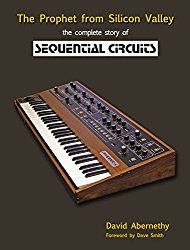
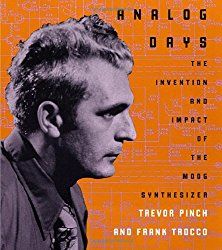
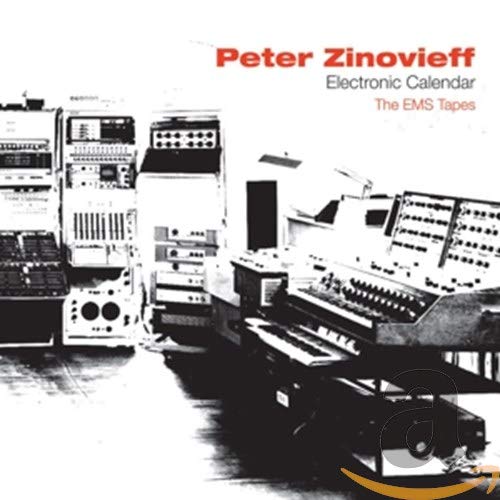
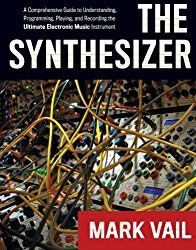

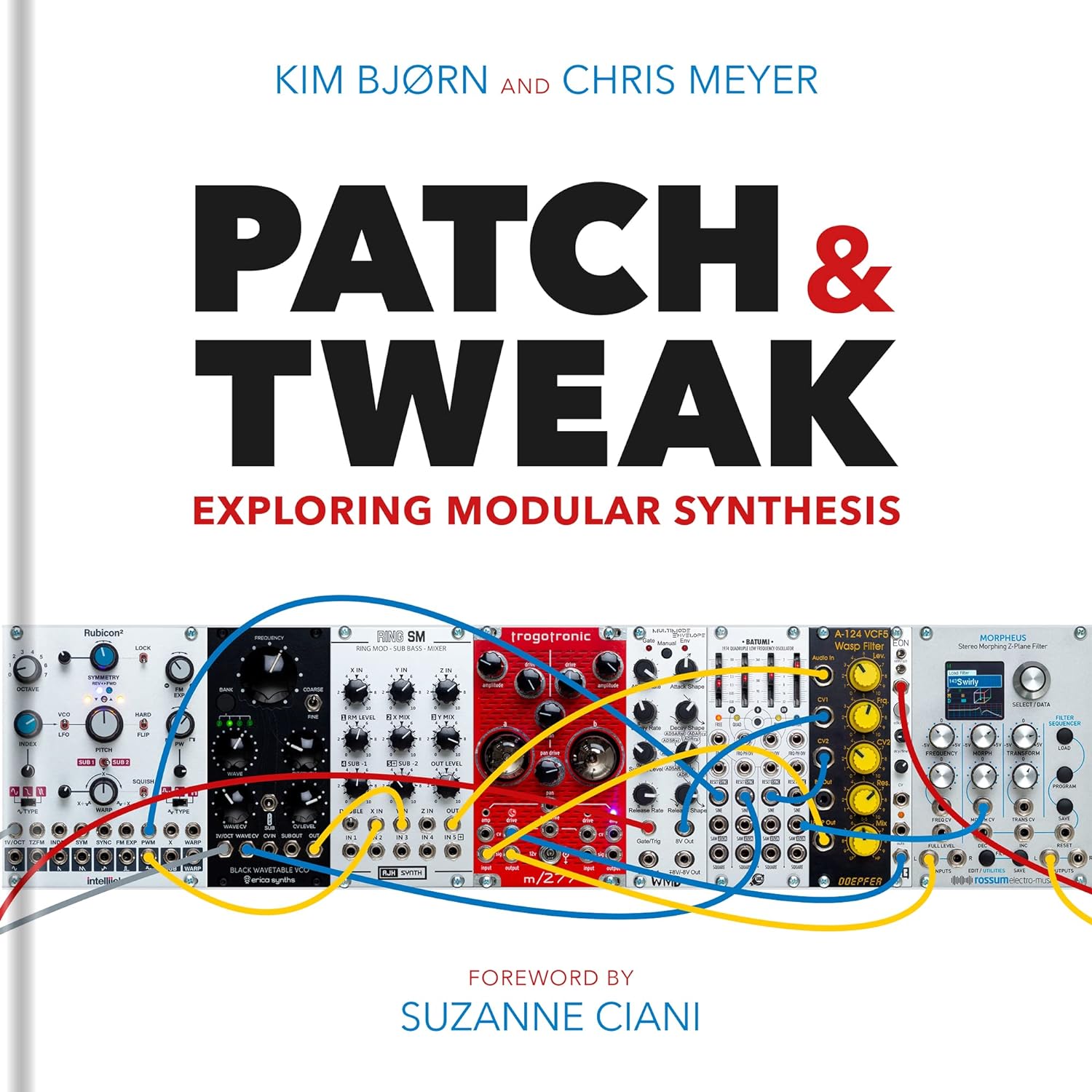
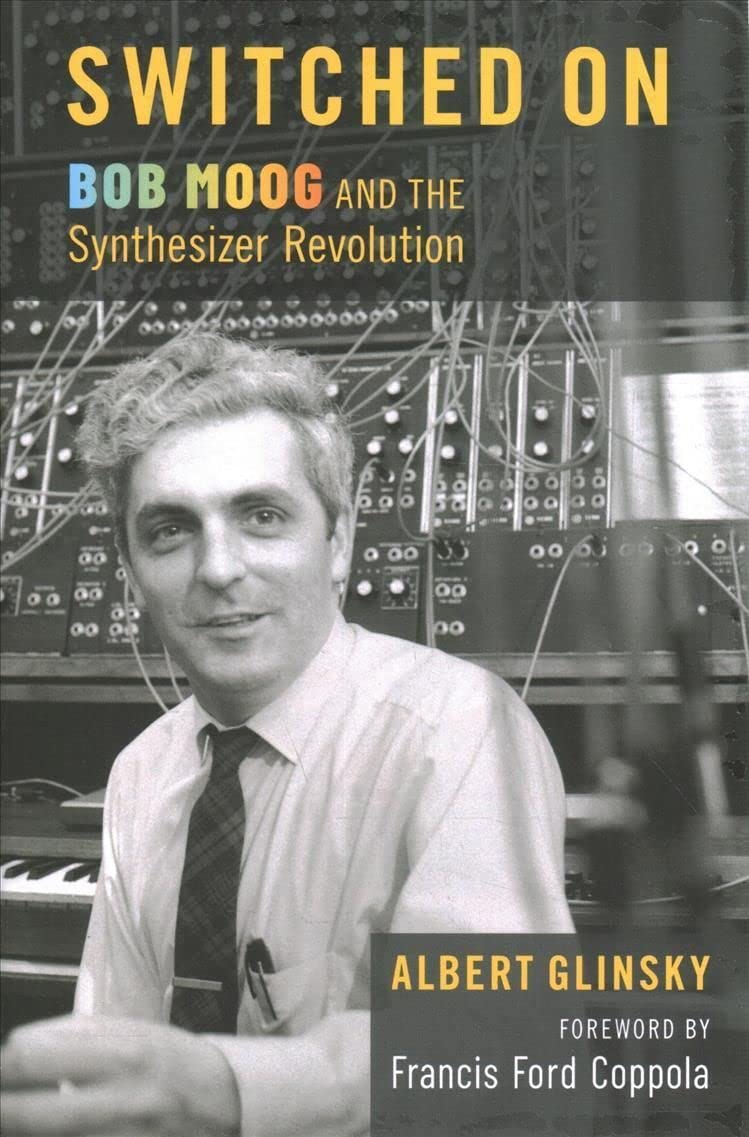
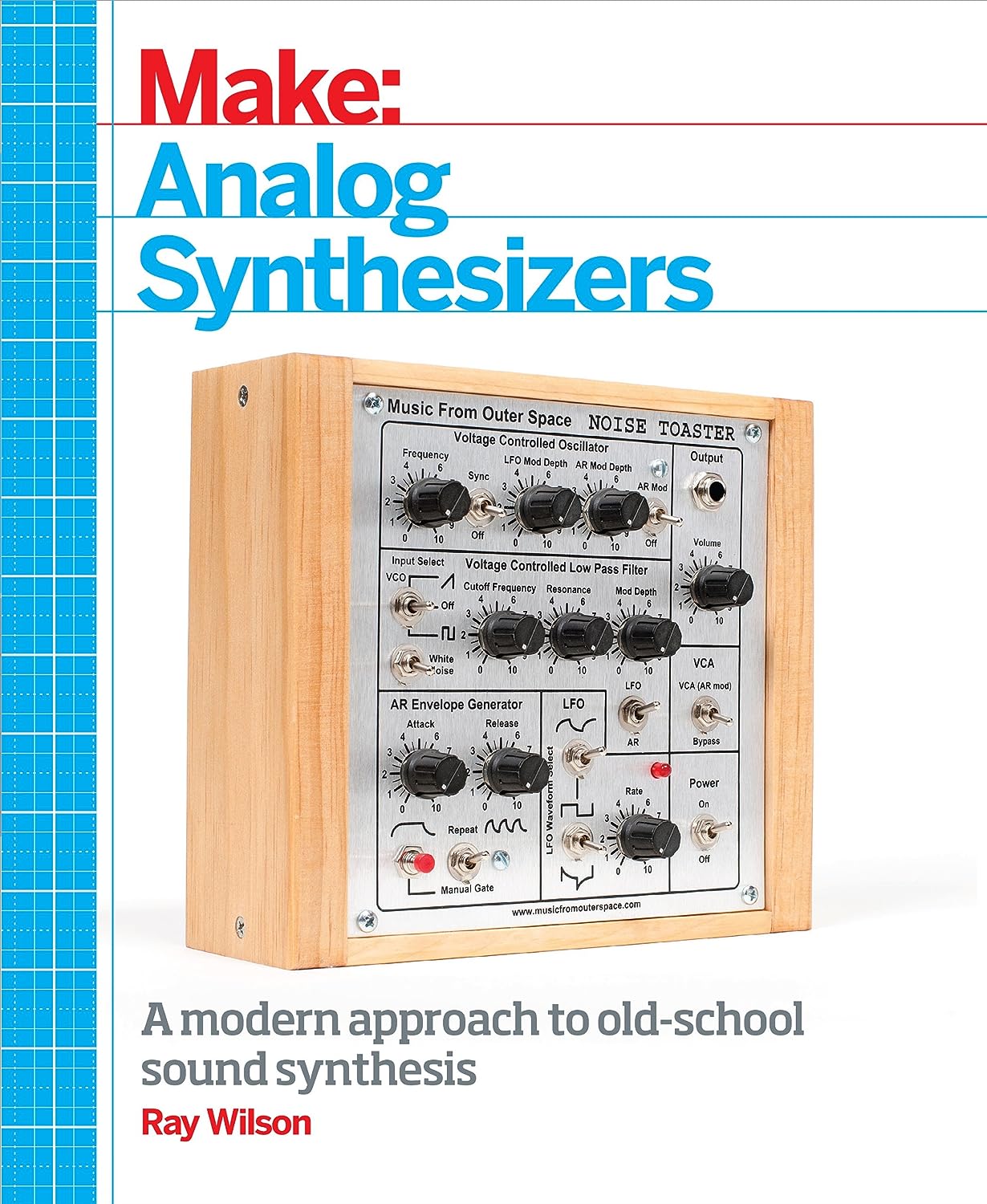
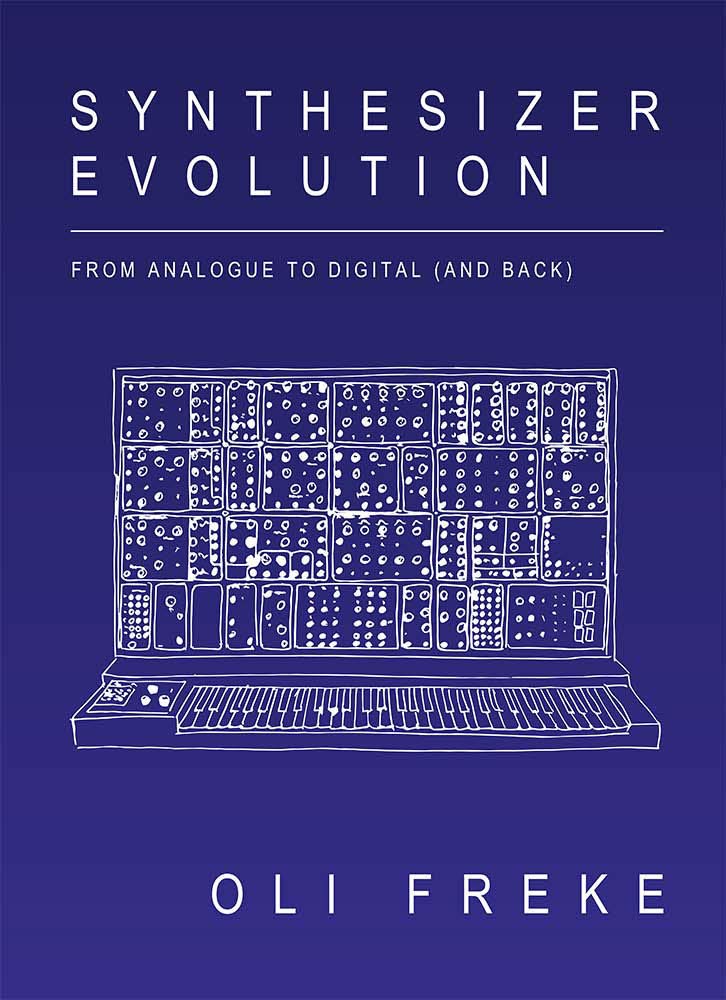

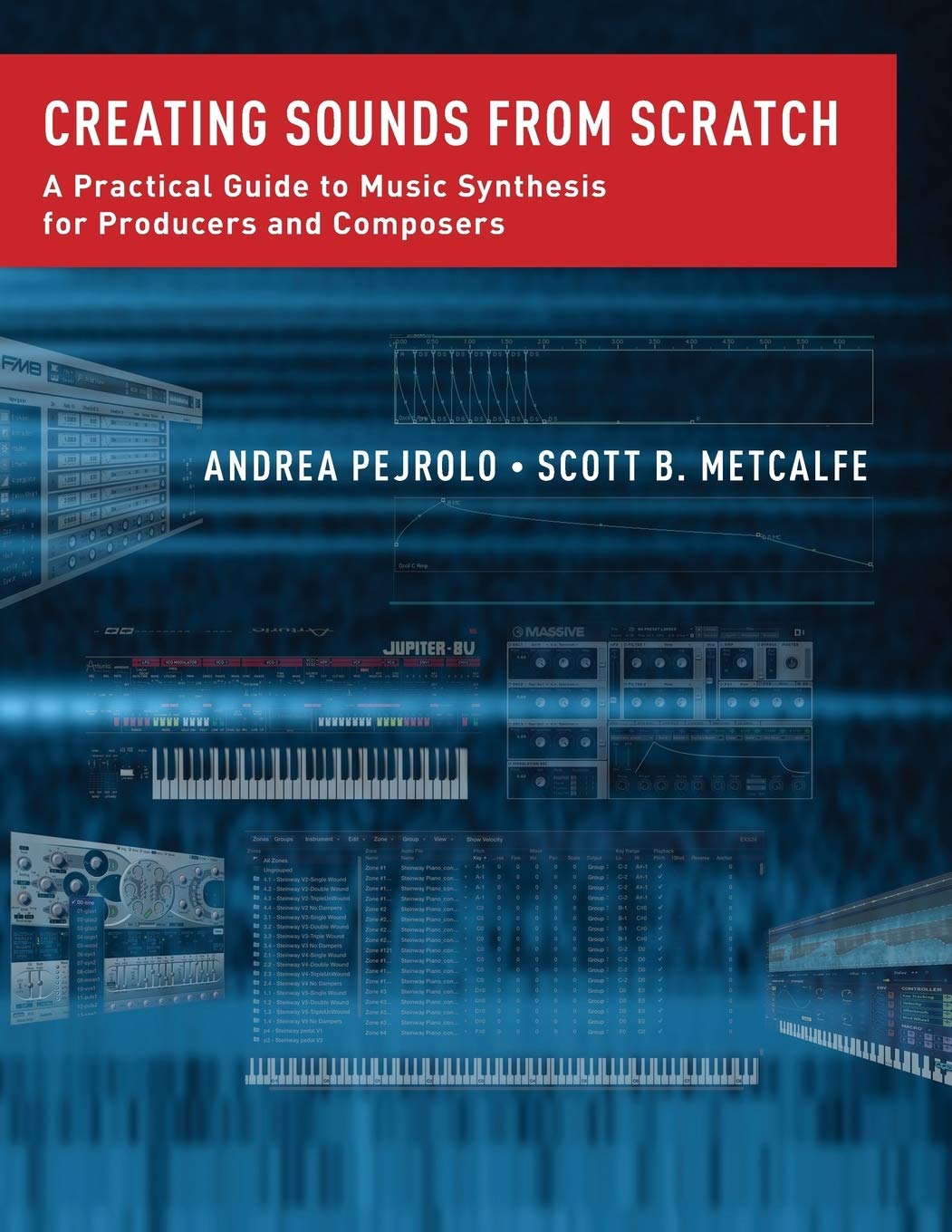


© Matrixsynth - All posts are presented here for informative, historical and educative purposes as applicable within fair use.
MATRIXSYNTH is supported by affiliate links that use cookies to track clickthroughs and sales. See the privacy policy for details.
MATRIXSYNTH - EVERYTHING SYNTH













© Matrixsynth - All posts are presented here for informative, historical and educative purposes as applicable within fair use.
MATRIXSYNTH is supported by affiliate links that use cookies to track clickthroughs and sales. See the privacy policy for details.
MATRIXSYNTH - EVERYTHING SYNTH















